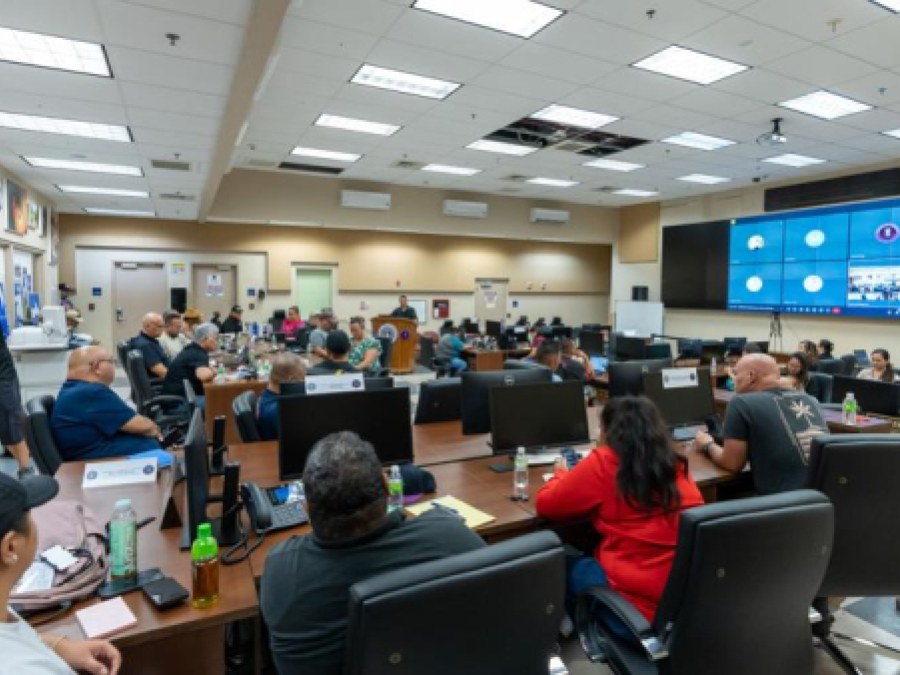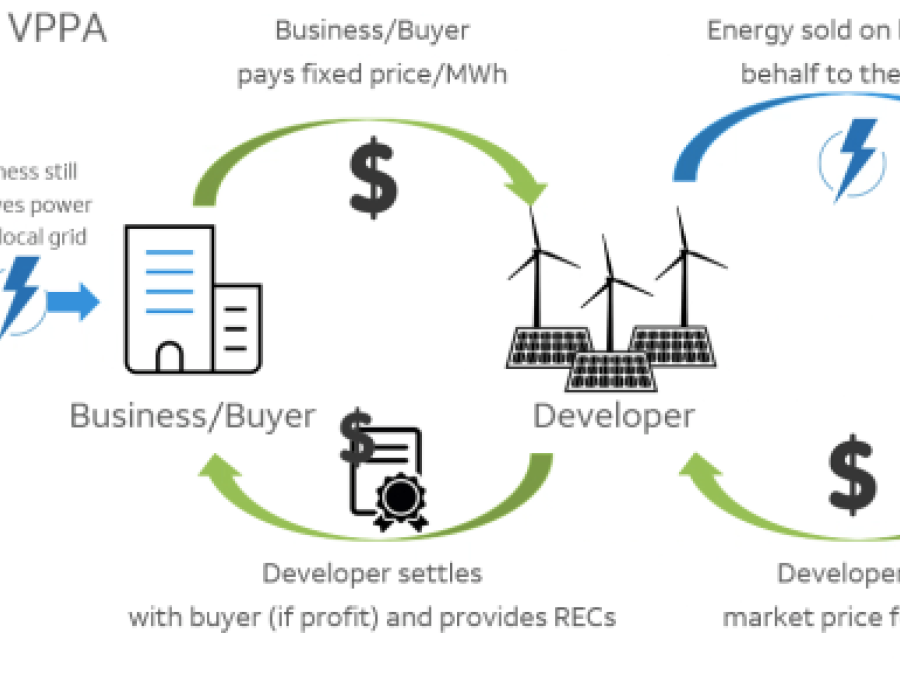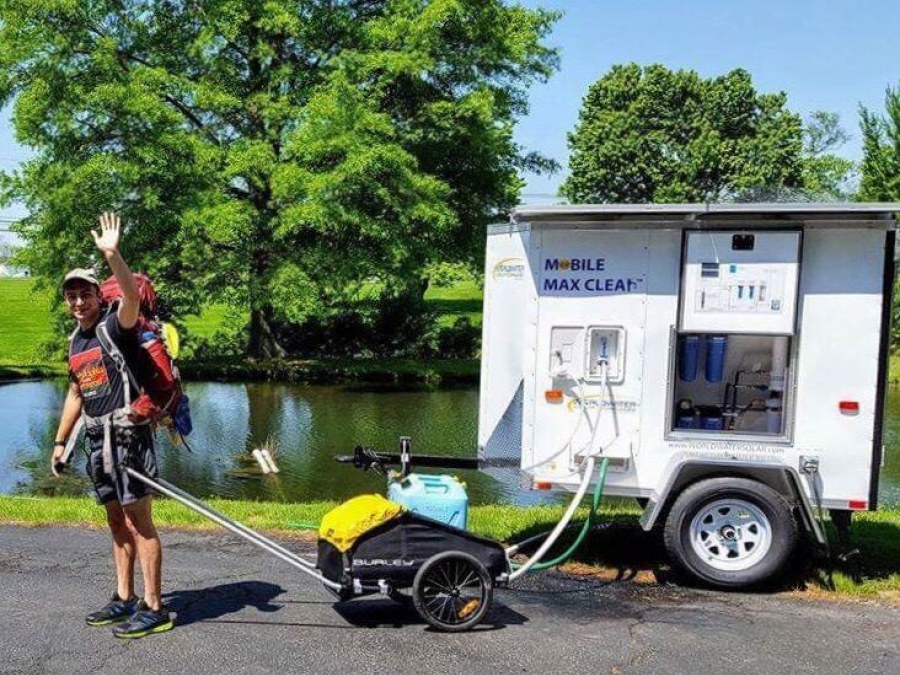
GOVERNOR Arnold I. Palacios on Sunday declared Typhoon Condition III for Saipan, Tinian, and Rota.
Typhoon Condition III means that damaging winds of 39 mph or greater are possible beginning Tuesday morning, and typhoon force winds of 74 mph or greater are possible Tuesday afternoon or evening.
As of 7 p.m. Sunday, based on information received from the National Weather Service in Tiyan, Guam, Tropical Storm Bolaven was about 575 miles southeast of Saipan and about 565 miles east-southeast of Guam with maximum sustained winds of 45 mph. It was headed west at 8 mph.
Bolaven was expected to make a slight turn toward the west-northwest with a slight increase in forward speed through Monday evening.
As of late Sunday afternoon, some businesses and homes on Saipan had already put up their typhoon shutters.
CNMI residents are urged to take the following preparatory measures:
• Fuel up your gas vehicles and generators.
• Secure loose debris and belongings around your household or yard.
• Those living in flood-prone areas should clear drainage areas and unblock storm drains to minimize flooding.
• Secure important documents such as birth certificates, tax papers, and insurance documents, and keep copies in a weather-proof bag.
• Prepare to board up windows or close shutters.
• Keep an emergency preparedness kit in your household, including first-aid kits, batteries, flashlights, toiletries, and a portable stove
• Stock up on food and water, as appropriate, for your household.
• Stay up to date with the latest information from the National Weather Service and the CNMI Office of Homeland Security and Emergency Management and other official sources.
Flood watch
A flood watch is also in effect for Saipan, Tinian, and Rota.
“As the storm gets closer, showers are expected to increase significantly. The latest model guidance indicates rainfall potential of 6 to 10 inches, with locally heavier amounts in excess of 12 inches possible. This would result in extensive flash flooding across the islands,” HSEM said.
For more information, call the CNMI Emergency Operations Center State Warning Point at (670) 237-8000 or (670) 664-8000. For those in the Northern Islands, contact the CNMI EOC State Warning Point at high frequency single side band radio on frequency 5.205.0.
[Submitted by Robert Mendiola]

As a business leader, it is important to carefully consider the potential impact of investing in renewable energy. There are both advantages and disadvantages to investing in renewable energy, and it is essential to weigh these carefully before making a decision.
One of the biggest advantages of investing in renewable energy is the potential for cost savings. Renewable energy technologies, such as solar panels and wind turbines, can provide a source of clean and sustainable energy for your business. Over time, this can help to reduce your reliance on fossil fuels and lower your energy costs. In addition, the cost of renewable energy has been decreasing in recent years, making it more affordable than ever before.
There are several ways that your business can invest in renewable energy. For example, you can invest in on-site renewable energy generation, such as a solar panel system for your facility. This can provide a source of clean energy for your business and potentially qualify for investment tax credits or other incentives. The federal government offers a number of tax credits and other incentives for businesses that invest in renewable energy, including the solar investment tax credit and the production tax credit. These credits can help to offset the initial cost of investing in renewable energy technology, making it more affordable for your business.
Another option is to participate in a virtual power purchase agreement (VPPA) with a renewable energy provider, in which you agree to purchase a specific amount of renewable energy at a fixed price over a certain period of time. This can help to hedge against future energy price increases and provide a predictable source of renewable energy for your business. Under a VPPA, the renewable energy provider typically sells the electricity generated by the project to the grid at the prevailing market price. If the market price is higher than the price you have agreed to pay for the renewable energy, the provider can make a profit. This profit can be shared with your business, providing an additional source of revenue.
In addition to investing in renewable energy directly, your business can also support the growth of renewable energy by trading renewable energy credits (RECs). RECs are a form of environmental commodity that represent the environmental attributes of one megawatt-hour of renewable energy. By purchasing RECs, your business can demonstrate its commitment to renewable energy and support the growth of the renewable energy industry.
RECs can be traded on various exchanges and over-the-counter markets, and the price of RECs can vary depending on supply and demand. By buying RECs at a lower price and selling them at a higher price, your business can potentially make a profit. However, it is important to carefully evaluate the market conditions and consider potential risks before making any investment decisions.
In conclusion, investing in renewable energy can provide a number of benefits for your business. It can help to reduce your energy costs, qualify for tax credits and other incentives, and potentially provide additional revenue through the sale of renewable energy or RECs. It can also improve your company's reputation and create jobs and stimulate economic growth in your community. However, there are also some disadvantages to consider, such as the initial cost and the reliability of renewable energy. As a business leader, it is important to carefully weigh the pros and cons before making a decision about investing in renewable energy.
[Submitted by Vince Rubiera]

Renewable energy storage is a critical element in the transition to a low-carbon, sustainable energy system. As more renewable energy sources such as solar and wind are integrated into the grid, the need for effective storage solutions increases. There are several different forms of renewable energy storage, each with its own unique characteristics and capabilities.
Pumped hydroelectric storage is a mature technology that involves pumping water uphill to a reservoir when excess electricity is available, and then releasing it downhill through a turbine to generate electricity when demand is high. Pumped hydroelectric storage can provide large amounts of power for extended periods of time, but it requires a significant amount of water and a suitable topography, which limits its potential locations.
Batteries are another form of renewable energy storage, allowing electricity to be stored in chemical form and then released as needed. There are several different types of batteries that can be used for renewable energy storage, including lead-acid batteries, lithium-ion batteries, and flow batteries. Lead-acid batteries are inexpensive and have a long lifespan, but they are heavy and have a lower energy density compared to other types of batteries. Lithium-ion batteries are widely used in consumer electronics and are becoming increasingly popular for renewable energy storage due to their high energy density and long lifespan. Flow batteries are a newer technology that uses liquid electrolytes to store energy, and they have the advantage of being able to store large amounts of energy for extended periods of time. However, they can be expensive and require careful maintenance.
Thermal storage involves using excess renewable energy to heat a substance, such as water or molten salt, which can then be used to generate electricity when demand is high. Thermal storage can be an effective way to store large amounts of energy over long periods of time, but it can be costly to implement and requires careful management to ensure the safety and stability of the storage system.
Hydrogen can also be used as an energy carrier, with renewable energy being used to produce hydrogen through the process of electrolysis. The hydrogen can then be used in a fuel cell to generate electricity, or it can be stored for later use. Hydrogen has the advantage of being able to store a large amount of energy in a relatively small volume, but it can be difficult and expensive to produce and store, and there are safety concerns associated with its handling and transport.
In conclusion, renewable energy storage is an essential component of the transition to a low-carbon, sustainable energy system. There are several different forms of renewable energy storage, each with its own unique characteristics and capabilities. As we continue to develop and deploy new technologies, it is important that we carefully consider the pros and cons of each option in order to make the most effective and cost-effective choices.
[Submitted by Vince Rubiera]



















